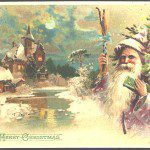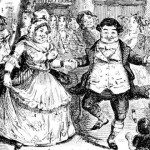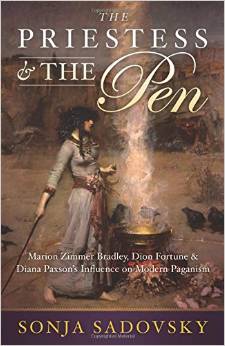 Away from Pagandom I spend a few hours each week working at a local bookstore. Every few months we get a catalog listing all of Llewellyn’s upcoming titles. Browsing through their catalog last spring I came across The Priestess and the Pen: Marion Zimmer Bradley, Dion Fortune, and Diana Paxson’s Influence on Modern Paganism by Sonja Sadovsky and was saddened that I’d have to wait until December to read it. Frequent readers of this blog probably know that I’m a huge Modern Pagan history nerd, and any book with “Dion Fortune” in the title is probably going to make my “wish list,” but I was excited about this release for other reasons too . . . .
Away from Pagandom I spend a few hours each week working at a local bookstore. Every few months we get a catalog listing all of Llewellyn’s upcoming titles. Browsing through their catalog last spring I came across The Priestess and the Pen: Marion Zimmer Bradley, Dion Fortune, and Diana Paxson’s Influence on Modern Paganism by Sonja Sadovsky and was saddened that I’d have to wait until December to read it. Frequent readers of this blog probably know that I’m a huge Modern Pagan history nerd, and any book with “Dion Fortune” in the title is probably going to make my “wish list,” but I was excited about this release for other reasons too . . . .
For Pagans of a certain age The Mists of Avalon was a game changer, and I’ve often considered writing about it myself. That someone smarter than me was going to take a look at it had me pretty excited. Diana Paxson is someone I know from the festival circuit and she’s always impressive. That she was included in the book was the icing on the cake. I was sent a review copy by Llewellyn in the middle of last month and promptly devoured The Priestess and the Pen the weekend before Thanksgiving. After reading the book I had a few questions for author Sonja Sadovsky which she graciously answered. I think her thoughts here are tremendous and well worth your time. There’s also a review of the book below too.
Jason: I’ll admit that I was a bit surprised when I settled in to reading The Priestess and the Pen. I thought it was going to be more of an exploration of “here’s how these writers have influenced Modern Paganism” and instead the focus was a lot narrower. What was the inspiration for building the work around the role of “Priestess” in the books of Dion Fortune, Marion Zimmer Bradley, and Diana Paxson?
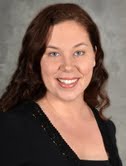 Sonja: Paganism is such a broad term, it is used by different groups to describe different things. Priestess is a term that has meanings that are immediately recognizable across the board. She is a template for the ideal woman, who is both sacred and secular, and a living link to the Goddess. The inspiration was to define the character of the Priestess as presented in different stories throughout the 20th century, and to use this ideal as a metaphor to discuss the evolution of the concept of the Goddess in contemporary Western culture. These three authors were chosen because they are so recognizable and popular.
Sonja: Paganism is such a broad term, it is used by different groups to describe different things. Priestess is a term that has meanings that are immediately recognizable across the board. She is a template for the ideal woman, who is both sacred and secular, and a living link to the Goddess. The inspiration was to define the character of the Priestess as presented in different stories throughout the 20th century, and to use this ideal as a metaphor to discuss the evolution of the concept of the Goddess in contemporary Western culture. These three authors were chosen because they are so recognizable and popular.
I know some people won’t believe this because your book was published by Llewellyn, but it still very much reads like an academic enterprise. Are you worried about perhaps losing readers because of the academic tone of the book? Did you make any specific revisions to your book to make it more accessible to the general reader?
There seems to be some kind of bias against Llewellyn, which is unfortunate as this is a great publisher with many solid titles to show for it. My book is only one of several challenging and intriguing contributions coming out this season, in an effort to bring some more advanced content to the readers. I think that people will enjoy the topic, and will likely find the complexity of the concept refreshing. It is important to keep the integrity of the idea intact, and I write very much as I speak. Personally, I think it is great to be presented with something that is stimulating and unique.
Early in the book you write about how the literary characterization of the occult Priestess has helped to shape Goddess-centered Pagan traditions. How drastically different would our understanding of the Goddess be today without the works of the authors you profile?
One common misconception in contemporary Paganism is that our current image of the Priestess is based on an ancient template. This is inaccurate, as most of our ideas are based on reconstruction of what we think our Ancestors practiced and believed, and this is always filtered through our contemporary experience. As a result, our concept of the Goddess in the West is fundamentally tied into the politics and culture of the Victorian and Modern eras. She is a product of the musings and inspiration of the early occultists, specifically female Magicians and Priestesses.
I have heard the argument that if the West had never experienced the destruction of primordial matriarchal society, women would enjoy a better political and spiritual position. I respectfully disagree with this position, as there are several examples of repressive caste systems that continue to revere forms of the Goddess which have been preserved from antiquity. I think that it was the absence and active repression of the concept of the Divine Feminine in our culture and society which created the need for new interpretations of the Goddess in the West to evolve and thrive, and gives her such dynamic power. As a result, the authors that I focus on in my book all explore concepts of the Goddess and Priestess outside of the traditional roles of wife and mother. It is very likely that these concepts would be absent from the current conversation, had these ladies not contributed to the dialogue.
Before reading your book I was well aware of Fortune and Bradley’s influence on Modern Paganism, but I was surprised by the inclusion of Diana Paxson. I hold what Paxson has achieved over the last few decades in high regard and certainly see her as an important figure, but I never realized how much of an impact her novels have had over the last twenty years. Does she get overlooked because many of her works are “newer?” (for lack of a better term).
I think that the main reason the Diana L. Paxson has escaped attention by previous scholars is because for the most part, she writes fiction and her books are niche. She has recently released some non-fiction relating to alternative spirituality and trance-work, but historians seem to have a bias against fiction writers, and this is the platform where she shares most of her theories about the nature of the Goddess and her experience as a Priestess. Diana has been instrumental to the revival of Norse Paganism and related currents, and this is primarily due to the popularity of her fictional works. I speak to this phenomena in my book, and describe how compelling ideas often escape academic scrutiny by being dismissed as mere fantasy.
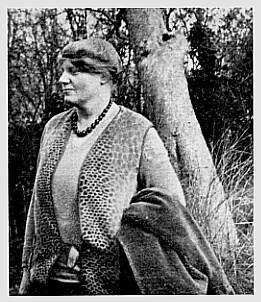 An author like Marion Zimmer Bradley has been influential because their works have been read by literally millions of people. A figure like Dion Fortune is a little different. She’s famous and well regarded in a lot of occult circles and completely unknown in others. How were you first introduced to her, and did that happen before you became interested in Paganism?
An author like Marion Zimmer Bradley has been influential because their works have been read by literally millions of people. A figure like Dion Fortune is a little different. She’s famous and well regarded in a lot of occult circles and completely unknown in others. How were you first introduced to her, and did that happen before you became interested in Paganism?
I think that Dion Fortune’s work and contribution to Western esotericism as a whole (which includes Christian Mysticism as well as Paganism) is going to be more recognizable once folks start researching the history of ideas that have led up to where we are today. People are not always well informed about where certain customs and beliefs originate, but happily we all have a wealth of information at our fingertips, just waiting to be explored.
I was interested in the concept of magic from a very early age, as long as I can remember. I was about eleven years old when I first came across the term Pagan, and it stuck. I had seen Fortune’s name referenced in other books that I read, but was unable to lay hands on her material until I was 19 or 20 and a freshman in college. I picked up a copy of The Sea Priestess and was an instant fan. It was so raw and uncensored, it made me want to find out more about this fascinating woman.
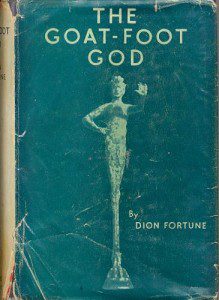 Fortune’s spiritual leanings are often the subject of intense debate. Historians like Ronald Hutton have surmised that her interest in figures like Pan and Isis waned in her later years, in your book you suggest otherwise. Just how Pagan-sympathetic do you think she was?
Fortune’s spiritual leanings are often the subject of intense debate. Historians like Ronald Hutton have surmised that her interest in figures like Pan and Isis waned in her later years, in your book you suggest otherwise. Just how Pagan-sympathetic do you think she was?
Whether Dion Fortune continued to play with Pagan concepts later in life will continue to be the subject of intense debate, as her public writings on these topics ceased with the start of WWII. I do not dispute Ronald Hutton, and restrict my research to works released during what he calls her “Pagan period.” However, Janine Chapman’s book, Quest for Dion Fortune, brings up some interesting anecdotal evidence about a big shakeup in the Society of Inner Light, and a purge of her personal papers and files. Who knows what may have been lost when she crossed over? Someone clearly thought it was threatening enough to destroy, but it will remain a mystery as to what she was working on at the time of her death.
You mention in the book that many historians trivialize her fiction works, why do you think this is? I’ve never met a Witch who suggested I read her non-fiction stuff, but I’ve met a lot who have told me to read Moon Magic.
As I mentioned before, I think historians tend to trivialize fiction as less important than non-fiction. In the case of Dion Fortune, the template for her fiction is primarily esoteric romance, which is often derided by scholars as a sort of failed wish-fulfillment fantasy because of her eventual divorce. Researchers love to speculate as to how her hormones and marital status affected her writings, but rarely give her male contemporaries’ personal lives the same type of scrutiny when analyzing their occult theory.
It surprises me that you have never met a Witch who recommends checking out Dion Fortune’s non-fiction, so I will remedy that by stating that you have met one now! Probably the reason that Witches connect more with her fiction is because the novels describe her personal experience as a Priestess. Kabbalistic theory and occult philosophy can be pretty dry, the novels have juicier details by far. However, Fortune herself recommends that the fiction and non-fiction be read in tandem, in order to gain the “keys to the kingdom.”
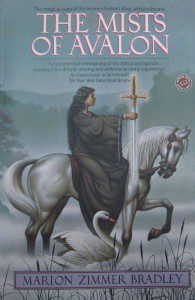 I’ve never been a particularly big fan of The Mists of Avalon, but I certainly recognize it as an important “Pagan Gateway.” Is Pagandom as a whole aware of just how influential its been over the last thirty years?
I’ve never been a particularly big fan of The Mists of Avalon, but I certainly recognize it as an important “Pagan Gateway.” Is Pagandom as a whole aware of just how influential its been over the last thirty years?
I think it is generational. If you ask someone under 35 about Mists, they do not think it is relevant, or maybe they have heard of it but most likely have never read it. If you ask someone over 35 the same question, especially if they are female, they often come back with with an answer that Mists was a fundamental book in their development as a Pagan and Witch. I kind of straddle this divide, as I am turning 34 this month, and I have a thing for weird books.
Some folks are aware of how influential this book has been, some are less informed. Chances are that even if the story does not appeal to you personally, there are others you interact with who have been influenced by these ideas. Part of the purpose of my book is to help folks understand how these ideas connect together.
I liked your inclusion of Madame Blavatsky at the start of the book. How influential have her ideas been not just on the writers you profile, but Pagandom as a whole?
Helena Petrovna Blavatsky’s influence is impossible to quantify. She was a game changer, extremely controversial, and in her time her publications were only outsold by the Bible, if that gives you an idea of how widely she was received. Her Theosophical Society was the first of its kind, and proposed magic (occult science) as the missing link between science and religion. Blavatsky was the original template for the empowered New Woman that heralded the end of the Victorian Age, and it has been argued that the organizational structure of the TS, which included anyone regardless of race, gender, class, or religion was the forum that gave rise to first-wave Feminism. If people wish to understand the roots of the eclectic nature of contemporary Paganism, they should start by examining the works and life of Madame Blavatsky.
THE PRIESTESS AND THE PEN-A Book Review
Literary Fiction has had a strong, yet subtle influence on Modern Paganism over the last 80 years. When asked about “influential Pagans” most people reply with the names of mostly contemporary practitioners and/or occult writers. Robert Graves, who is primarily remembered as a poet and writer of fiction, is more well known in the Pagan Community for his “non-fiction” book The White Goddess than his novels. Fiction writers like Marion Zimmer Bradley are sometimes looked at as an entry point into Modern Paganism, but rarely are they looked at as influences upon the larger whole. Sonja Sadovsky’s book provides a needed remedy to that oversight. In addition, I think it’s one of the most important “Pagan History” books of the last ten years.
As I mention in the interview above, The Priestess and the Pen was not what I was expecting. Judging by the title I thought it would be a by-the-numbers “here’s how these authors have influenced Modern Paganism.” Instead, TPatP is an exploration into how authors Fortune, Bradley, and Paxson interpret the role of “Priestess” in their books, and how those Priestesses interact with deity and the world around them. I ended up finding this a far more interesting take on the thought processes of the authors involved, but it also mirrored much of Modern Pagan history.
Fortune’s Priestess is nearly always associated with a male, and within that pairing it’s easy to see some of the foundational ideas behind Modern (Gardner-inspired) Witchcraft. Fast forward to Bradley’s work in the 80’s and 90’s and one can see the formation of more eclectic womyn only covens with a heavy emphasis on the idea of the Triple Goddess. Paxson’s work come across as much more “deity centered” than that of the other two authors, offering up characters who have intensely personal relationships with their deities. As the book moves forward it was delightful to see not just the changing ideas about deity, but also the growing power of the Priestess figure in her own rite.
While the majority of this book is about the role of the Priestess that’s not all there is in TPatP, and it wasn’t even my favorite part of the book. The main text of the book concludes with a personal look at the Triple Goddess archetype, and why it sometimes doesn’t quite work for every woman. I found Sadovsky’s writing especially powerful here, and personal, and I’m glad to hear that she plans to continue to explore those themes in a subsequent work. The interview with Diana Paxson in the middle of the book is marvelous and I could would have enjoyed looking in on their conversation for another 50 pages, it was that interesting.
I did find the tone of the book a bit academic, so it’s not going to be everyone’s cup of tea. It’s not a slog by any means, but I do think it’s a work that requires a little bit of time to process in the brain. This is a strong book, and an important one, and I felt smarter and more informed after reading it. That doesn’t happen very often with Pagan books these days. It was also fun to come at Paganism and the role of the Priestess from an entirely different angle. The Priestess and the Pen is not going to appeal to everyone, but for those of us who love history, literature, and exploring our origins it’s a must.
Your book is certainly not a “how to” type of project but you do include a little chapter on automatic writing and remark that it’s a good way to connect with the Goddess. How much of that technique do you think writers like Fortune, Bradley and Paxson have used over the years? Do you use it in your own practice?
Automatic writing is spontaneous, trance writing can be somewhat directed. These two types of writing are often described together, and sometimes the terms are used interchangeably. This type of experimental writing has been a staple of women’s writing since the 18th century. The authors described in The Priestess and the Pen have all claimed to use this technique. Bradley claims that composing Mists was a religious experience. Fortune describes trying to kill of her character of the Priestess in The Sea Priestess, but that the character would not lie quiet in her grave, and was constantly bothered until she allowed the character to direct the story, which is how Moon Magic came about. Paxson speaks extensively in my book about channeling the various Goddesses in her stories and her process. I have used this process myself, experimented with it in my own group, and also presented the technique as a workshop in a festival context.
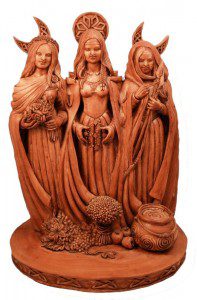 My favorite part of Priestess was your closing discussion on the nature of Maiden Mother and Crone and just how limiting the concept can be. Not every twenty year old woman identifies with the Maiden and not every 80 year old woman thinks of herself as a Crone. Because I found that part of the book so captivating would you care to share some of your thoughts on that topic with us?
My favorite part of Priestess was your closing discussion on the nature of Maiden Mother and Crone and just how limiting the concept can be. Not every twenty year old woman identifies with the Maiden and not every 80 year old woman thinks of herself as a Crone. Because I found that part of the book so captivating would you care to share some of your thoughts on that topic with us?
The Triple Goddess was the image that was presented as the normative ideal when I first began exploring Paganism. The image of the Mother, the Maiden, and Crone was held up as the Divine counterpart to the biological cycle of the majority of women. On one level, this is a good thing, as it presents the natural aging process as holy. However, this concept includes some limitations, as it defines a woman, and by extension the Goddess, primarily through her reproductive potential. Both women and men in the West have struggled for centuries for the right to claim identities that are not dependent on biological determinism, it just makes sense to expand our definitions of the Divine to include other alternatives as well.
My first disconnect with this concept came from some common associations with the Maiden. I enjoyed the idea of freedom, inspiration, and autonomy, but it seemed strange to limit these qualities to shortest segment of my life. I have always been uncomfortable with the idea of defining the Maiden primarily through her beauty. This type of thinking only reinforces the idea that youth equates to beauty, to being sexy. Why divorce these concepts from being a nurturer, from maturity? How is this different from the message of the dominant paradigm? It did not seem authentic to define myself by my biological potential. I was drawn to the Goddess, but found it difficult to identify with these terms.
When I got married, some folks confided that they were disappointed because I would no longer be a “Maiden.” Somehow my person-hood was tied in with this arbitrary label that had been assigned to me. This, among other incidents I detail in the book, led me to withdraw from active participation in public Pagan events for a while. I spoke with other people that had similar experiences. One young woman cried on my shoulder for hours because she was rendered infertile through treatment for cervical cancer. She identified as Pagan, and was convinced that she had failed to realize the divine plan and give homage to the Mother. It was then that I began to realize that there were some serious flaws in the message. Now that I am in my thirties, and a mother myself, I am convinced that these concepts would benefit from some enhancement.
There is nothing wrong with the Triple Goddess if this is a form that resonates with you. However, it is important for contemporary Pagans to acknowledge that this is a relatively new concept, as in mid-20th century, and that if it doesn’t quite fit, we are empowered to use whatever form we choose to better express our connection to the Divine.
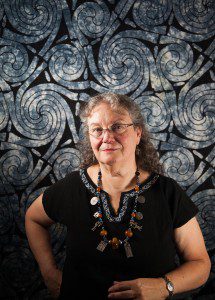 As I said previously, that discussion really stuck with me after I put the book down. Do you ever see a day when Modern Pagans add to the Triple Goddess construct or alter it in some way to make sure it feels inclusive to everyone? You basically advocate for it near the end of your book (and I wanted to cheer you on while I did so).
As I said previously, that discussion really stuck with me after I put the book down. Do you ever see a day when Modern Pagans add to the Triple Goddess construct or alter it in some way to make sure it feels inclusive to everyone? You basically advocate for it near the end of your book (and I wanted to cheer you on while I did so).
I think that day is already here. In my book I discuss that there is a bit of a disconnect between theory and practice. Although many people claim the Triple Goddess as the transcendental idea, many others have also adopted a personal or local Deity to supplement their worship. There is usually a face or form that they favor, or choose to work more than the others, and a personal relationship develops. This is an organic process, which I call the Four-fold Goddess. The fourth face is a reflection of the passion and personal power of the practitioner. For a woman, this face is the Priestess, for others, it is a reflection of their anima, or ideal feminine.
From my own experiences and observations, this Fourth face presents itself as the Goddess as either the Lover or the Warrior. This is the idea of eros and thanatos expressed in a female form. It is independent of one’s age or biological reality, and can be accessed at any stage of life, regardless of gender or orientation. I unpack this idea a bit more in the book of course, but I think that it is safe to say that many others are coming to similar conclusions, in private if not in public.
When you began this project did you see it descending down those avenues or was that the result of your research?
This project has definitely changed and evolved over time. The original idea began a decade ago, this incarnation of the topic took two years to complete from the initial pitch to final publication. I started the research with an open-ended idea that I wanted to find out something new, and in that respect the original goal was met. When I revisited the concept, it seemed that my experiences had deepened my understanding of certain ideas, while others were less important. I know that there is more of myself and my personal experience in it than I had ever expected to divulge. I have always been a private person, but this book refuses to sit in the back of my closet any longer, and part of the exercise is utilizing my voice.
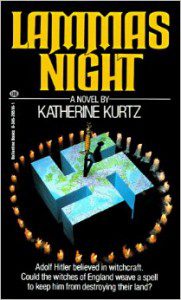 Were there any other writers you considered including in this project besides the “Big 3” you profile? Why didn’t they make the final cut?
Were there any other writers you considered including in this project besides the “Big 3” you profile? Why didn’t they make the final cut?
Well I had hoped to include more authors that had been published through an MZB anthology. I had tried to contact Mercedes Lackey, because I was very impressed with her four-fold construction of the Goddess included in some of her fiction, and thought it would fit the premise of the book well, but she did not return my inquiries. I also reached out to Katherine Kurtz to discuss some of MZB’s esoteric Christian influences, but she became uninterested in participating in the project once it was apparent that it was slanted toward an understanding of these themes in a Pagan context. She was polite and explained that she had no comment or knowledge of anything along those lines. Due to the nature of the premise, it is preferable to get a living author’s approval on the topic before including them into the larger project.
What was your process like for writing the book? Did you come in with a set idea or did you see your perceptions and assumptions change as you put it all together?
My process is pretty chaotic. When I started the book, I was still nursing my youngest, and her brother is not much older. As I was wrapping up the final draft, they were still under five years old. Writing with toddlers is definitely insane. So usually I was typing during nap times and late into the night. Some days I was fortunate to have a friend or relative to babysit, really it has been a community effort to get this thing to the finish line. Usually I just block out some days to pound it out, because I have to work on top of it all. It has been stressful, but rewarding. Plus my daughter loves looking through the book to find my picture, which she call the “Mommy page.”
I entered the project pretty open-minded, but determined to bring the best practices that I had picked up from my academic adventures. I strive to be authentic, honest, and thorough in what I present. I learned that for this type of writing, one also has to incorporate one’s own experience, so this is an area in which I have experienced growth, and will continue to work on.
Any book tour type plans or speaking engagements over the next six months? (I’m probably just being greedy because I’d love to see you speak at a place like PantheaCon.) How about future books? I’d love to see you continue to expand upon your thoughts of the Goddess.
Well I am going to attend Pantheacon 2015, and will be hanging out at the Llewellyn hospitality suite. During the con I will be also doing a talk about my book at the East West Bookstore on Feb. 13, 2015. This month, I am going to be presenting at The Raven Faerie bookstore in Lakeland, FL on December 27, 2014. I am also booked as a headliner to attend the Summerland Spirit Gathering in Wisconsin in July 2015. All of these appearances and more are listed on my website: www.sonjasadovsky.com.
The next book will be expanding my thoughts on the Four-fold Goddess. There are also some other ideas that I have been kicking around, but right now I am focusing on seeing how things pan out with this current adventure.
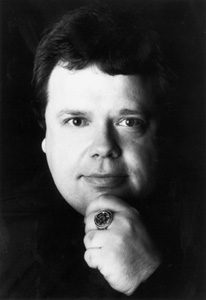 When I read the introduction I couldn’t but tear up a little bit realizing I was reading some of the last published words of Donald Michael Kraig (who edited the book). What was it like working with Donald and what was his influence like on the final product?
When I read the introduction I couldn’t but tear up a little bit realizing I was reading some of the last published words of Donald Michael Kraig (who edited the book). What was it like working with Donald and what was his influence like on the final product?
Don was incredible to work with, and there is a collective loss that we all share. His passing is still shocking to me, and I feel his absence keenly. While I am of course happy that the book made it to print, the success is bittersweet. We had plans to meet up at Pantheacon 2015 to launch the book, but now instead of clinking glasses, I will have to toast him in spirit.
Donald Michael Kraig was a wonderful editor to work with, encouraging but set high standards. He made me re-write the original pitch five times before submitting it to Llewellyn for review. He never told me what to write, just handed it back and asked politely for me to try again. He loved the concept, and was confident that I could pull it off, so he pushed me to succeed. He did not pull punches and gave honest feedback. Don called it “using the carrot and the stick.” For those of you who write, you know how fun that process can be. I think I re-wrote the book about eight times total. Again, he would not give instructions, he would just point to a section and state that it was “missing something” or “needs improvement.” His method was Socratic, and he would always answer a question with another question. “What do you think it needs?” was a favorite comeback of his.
I remember being frustrated, but I appreciated the attention and time he spent with me. He mentored me about the professional writing experience, and gave me the tools I needed to polish the work into its final form. Don was instrumental in encouraging me to incorporate my own experience into the final product, which I was not exactly thrilled to do in the beginning, but eventually included. When I finally submitted the final section that highlighted my own ideas he called me right away to demand where I had been hiding this all along, and to congratulate me on finishing the book. He was very excited about the final product, and proud to write the foreword for the piece.
Thanks so much to Sonja for answering my mostly inane questions. The Priestess and the Pen is a great book and should appeal to anyone interested in the histories of literature, feminism, and Modern Paganism.


